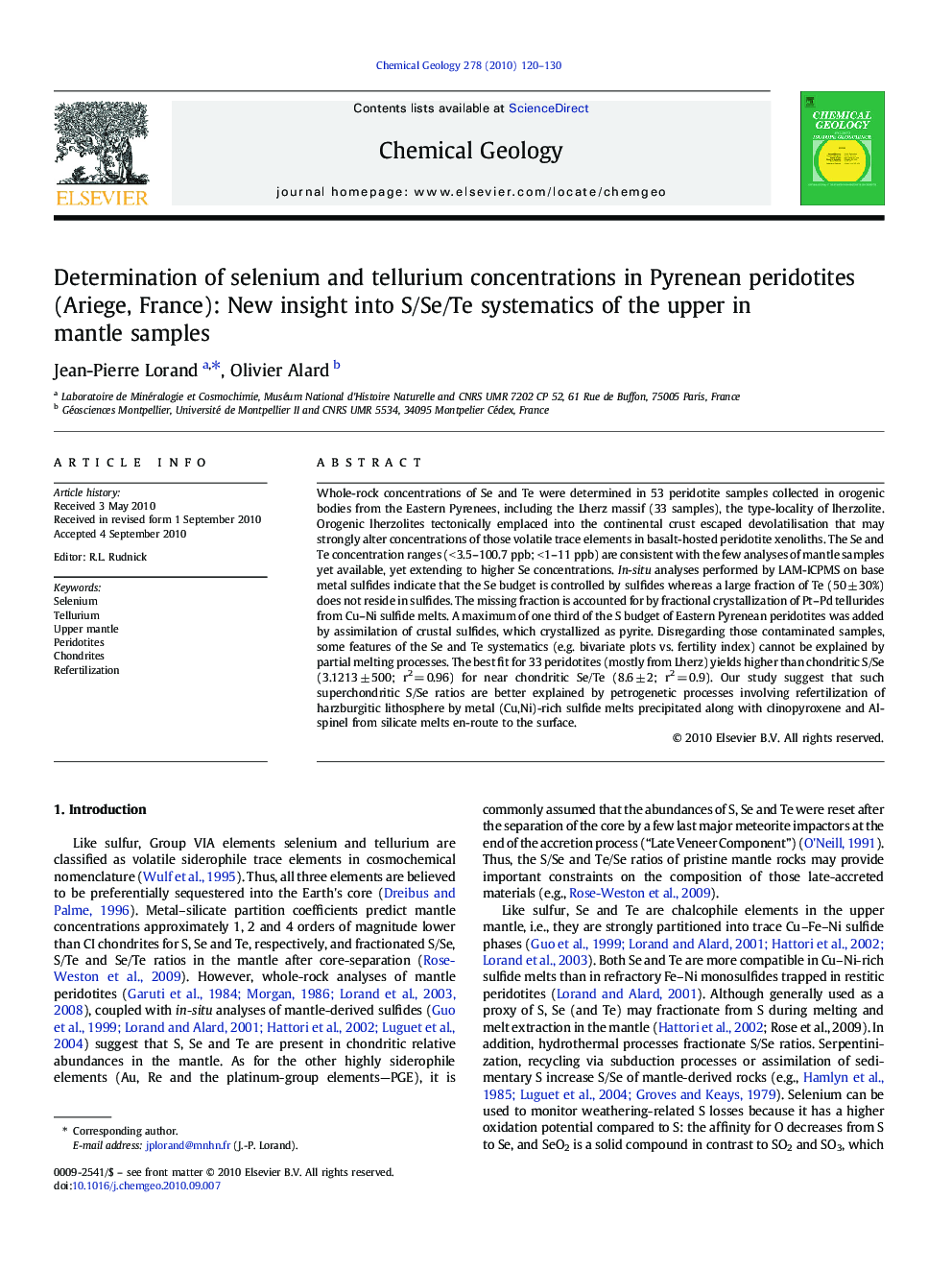| کد مقاله | کد نشریه | سال انتشار | مقاله انگلیسی | نسخه تمام متن |
|---|---|---|---|---|
| 4699992 | 1637680 | 2010 | 11 صفحه PDF | دانلود رایگان |

Whole-rock concentrations of Se and Te were determined in 53 peridotite samples collected in orogenic bodies from the Eastern Pyrenees, including the Lherz massif (33 samples), the type-locality of lherzolite. Orogenic lherzolites tectonically emplaced into the continental crust escaped devolatilisation that may strongly alter concentrations of those volatile trace elements in basalt-hosted peridotite xenoliths. The Se and Te concentration ranges (< 3.5–100.7 ppb; < 1–11 ppb) are consistent with the few analyses of mantle samples yet available, yet extending to higher Se concentrations. In-situ analyses performed by LAM-ICPMS on base metal sulfides indicate that the Se budget is controlled by sulfides whereas a large fraction of Te (50 ± 30%) does not reside in sulfides. The missing fraction is accounted for by fractional crystallization of Pt–Pd tellurides from Cu–Ni sulfide melts. A maximum of one third of the S budget of Eastern Pyrenean peridotites was added by assimilation of crustal sulfides, which crystallized as pyrite. Disregarding those contaminated samples, some features of the Se and Te systematics (e.g. bivariate plots vs. fertility index) cannot be explained by partial melting processes. The best fit for 33 peridotites (mostly from Lherz) yields higher than chondritic S/Se (3.1213 ± 500; r2 = 0.96) for near chondritic Se/Te (8.6 ± 2; r2 = 0.9). Our study suggest that such superchondritic S/Se ratios are better explained by petrogenetic processes involving refertilization of harzburgitic lithosphere by metal (Cu,Ni)-rich sulfide melts precipitated along with clinopyroxene and Al-spinel from silicate melts en-route to the surface.
Research Highlights
► Selenium behaves as a chalcophile element in mantle samples.
► Tellurium in mantle samples is partitioned between tellurides and Cu–Ni sulfides.
► Se and Te systematics are good markers for magma–mantle interaction.
Journal: Chemical Geology - Volume 278, Issues 1–2, 1 November 2010, Pages 120–130